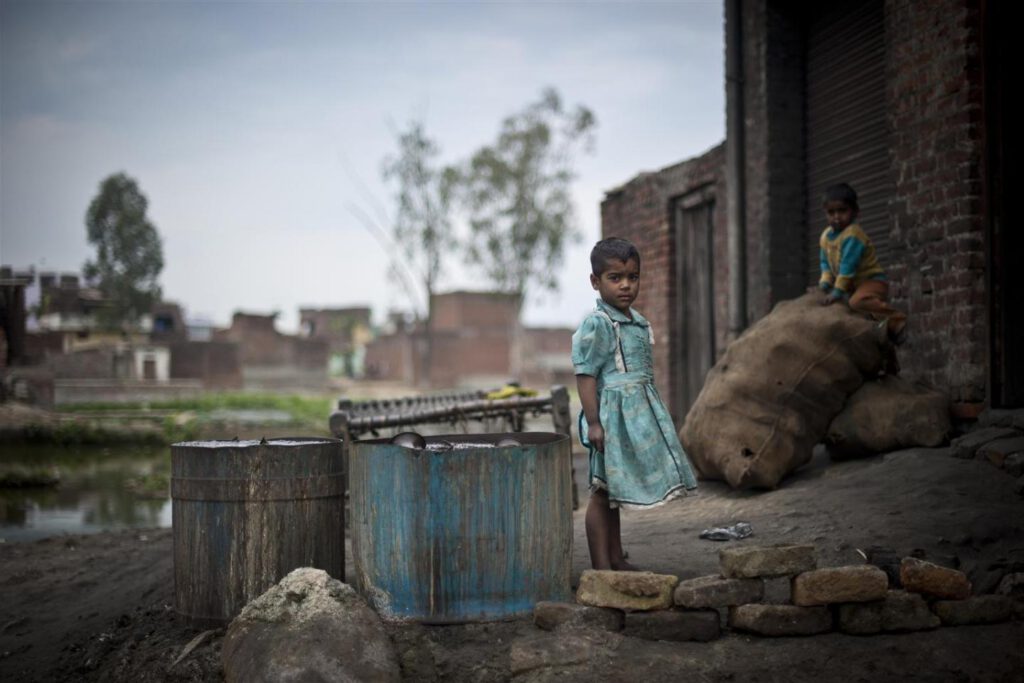The socio-economic consequences of the COVID-19 pandemic are already having devastating effects on children’s ability to access health, education, nutrition, water and sanitation and housing services, with a projected additional 150 million children living in multidimensional poverty. Yet, with parents losing jobs and income, it is equally important to understand what the consequences will for children living in monetary-poor households.
By the end of the year, between 122 and 142 million additional children will live in households who cannot make ends meet due to the impact of the coronavirus pandemic, according to updated Save the Children and UNICEF estimates. For 2021 – based on projections with a higher uncertainty – we expect only a modest reduction in the best-case scenario and numbers largely to remain unchanged in the worst-case scenario.
The situation by end of the year
Our analysis reveals that even before the pandemic struck, 591 million children – almost 1 in 3 children in the mostly low- and middle-income countries included in our analysis – lived in households considered poor by national definitions. The vast majority of them lived in sub-Saharan Africa and South Asia.
As new evidence emerges and projections turn into facts, our end-of-year scenarios unfortunately become more pessimistic. When we first published those estimates in May, we projected an increase of children living in monetary poor household by 63-86 million. When we updated those estimates based on new economic forecasts in June, the additional number of children in those families was estimated at 90-117 million. Incorporating the latest (October) forecasts of economic growth by the IMF and the World Bank, we now expect an increase of 122-142 million children in monetary poor households in comparison to the pre-COVID baseline. This increase is due to more pessimistic economic outlooks across most regions and is driven by much gloomier picture for South Asia.
Looking ahead to 2021
With the economic outlook for 2021 still very unclear, our estimates for this time next year come with a large degree of uncertainty. In the best-case scenario, we may see the total number of children in monetary-poor households decrease by 44 million from the end of 2020 – or only one-third of the potential increases this year. However, in the worst-case scenario, the numbers might be largely unchanged as compared to end-of-2020. This is a sobering reminder that monetary poverty for many families is not going to disappear any time soon and will have long-lasting impacts on the well-being of millions of children.
Our estimates take into account both an income effect – as the economic downturn will reduce household incomes – as well as a distribution effect. The latter accounts for the fact that changes in economic outputs will not impact all people equally and the fact that averages hide wide disparities underneath. Different estimates for both effects provide us with a range of scenarios, and as a consequent, a range of poverty estimates. You can find more detail in our technical note.
Limiting the impacts of the pandemic
For now, these numbers are only projections, and there is hope that they do not become a reality. This would require government actions addressing and mitigating the impacts of COVID-19, and fortunately, many have been very active on this front. UNICEF and Save the Children call for rapid and large-scale expansion of social protection in terms of coverage, type of interventions, and amount of support. These efforts could include cash transfers, school feeding and universal child benefits.
Governments must also invest in other forms of social protection, fiscal policies, employment and labour market interventions in order to support families. These include expanding universal access to quality healthcare and other services, and investing in family-friendly policies, such as paid leave and childcare. Given that many governments themselves face financial constraints, there is a need for predictable and enhanced official development assistance (ODA) as well as further debt relief above and beyond the efforts already under way.
Note: These projections are as of November 2020.


